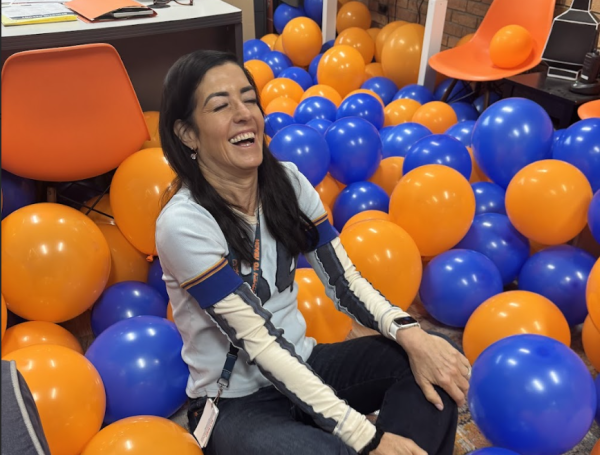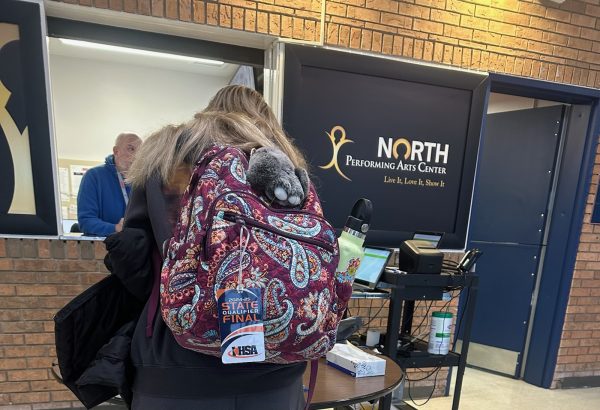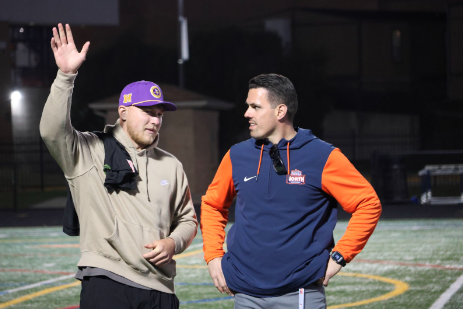District 203 adjusts to one-to-one initiative
By Features Editor Shreya Narayan
Production by Multimedia Editor Jakob Wastek
Thirty years ago, students at Naperville North High School sat in desks holding a pencil and paper, copying notes from a chalkboard in the center of the class.
Fifteen years ago, NNHS teachers used laptops for the first time to plan lessons and distribute notes.
Today, junior Alex Arnold opens his Google Chromebook in his Chinese 3 class. He and his peers log into Canvas and click on a recording in Chinese. They then use Canvas to collaborate and reflect on what they have heard while their teacher, Piling Chiu, supervises and grades the assignment.
In August 2014, District 203 implemented its Digital Learning Initiative (DLI) program. District 203 director of instructional technology John David Son explained that, last year, the district had a two-to-one student to device ratio. For every two students, there was one technological device they could use.
According to the DLI website, District 203 “launched [DLI] to investigate the teaching and learning benefits provided by the use of electronic devices in the classroom that come home with the student.” The study consists of 41 classes in 13 schools across District 203 receiving either Apple iPads, Google Chromebooks, or Asus 2-in-1 tablets.
“Technology is a tool that allows students to learn at any time, anywhere. It allows them to personalize learning and pace themselves,” Son said. “[DLI] is about providing unique and innovative ways for our students to learn. It provides access to so many different resources.”
NNHS technology integration specialist Anna Kraftson said that the results of the DLI program will guide the District’s decision to go one-to-one, where every District 203 student will be given his/her own technological device to use for the school year.
“We know that we will be going one-to-one in District 203,” Krafston said. “Right now, we are trying to determine what is the best device for each age group.”
Son said the first data set will be taken in October.
At NNHS, there are 15 classes involved with this program, according to Kraftson. Throughout the district, there are around 1,500 students in this program.
In her Chinese class, Chiu said that the Chromebooks are used 80-90 percent of the time. Although it took some time to reconfigure the curriculum, the computers are more efficient in collecting work. Now, the learning is more student-based.
“The students can observe what others are doing,” Chiu said. “Writing Chinese characters by hand can be very time consuming. With typing, everybody is much more proficient.”
The DLI program evolved from the Bring Your Own Device (BYOD) program which started two years ago.
With the DLI and one-to-one programs, all devices used in a classroom are the same. Kraftson said other benefits include a sense of pride and ownership for students, increased student engagement and empowerment, equal access to technology, increased student-to-teacher and student-to-student communication and personalized learning.
However, Kraftson said not all users are comfortable with technology, and perhaps more importantly, the DLI program increases screen time for students. Other concerns also arise, which has experts questioning the true effectiveness of technology on education and the brain.
Nicholas Carr is one of those experts. His book “The Shallows,” which is currently on the approved reading list for students in District 203, explores how Internet impacts the brain and the ability to read and think deeply.
Though Carr could not be reached by The North Star for comment, he has spoken at length about the issue. In an article for “The Atlantic“, Carr describes his views on why ‘Google is making us stupid.’ He said that technology has been rewiring the neural circuits in the brain.
“I’m not thinking the way I used to think. Immersing myself in a book or a lengthy article used to be easy,” Carr said in the article. “Now my concentration often starts to drift after two or three pages. The deep reading that used to come naturally has become a struggle.”
Psychology and education professor at University of Illinois at Chicago Susan Goldman said that technology will be an essential part of our future and productive citizens need to be able to use integrated technology in all aspects of life. However, she admitted that it is extremely difficult to determine the true effects of technology’s impact on education and the brain.
“There are an infinite amount of outside factors, and each school district utilizes technology in a different way,” Goldman said. “Technology hasn’t been used enough in schools for us to see the effects on the brain.”
Goldman said some studies claim that technology hinders efficiency. However, Goldman also said there are other studies that show opposite results: technology leads to more individualized learning and better success.
“There’s little research on technology’s true impact on education. The research that has been done to date does not point to one specific answer but proposes many questions,” Goldman said. “This initiative is a chance to answer those questions. [District 203] is definitely going in the right direction.”





